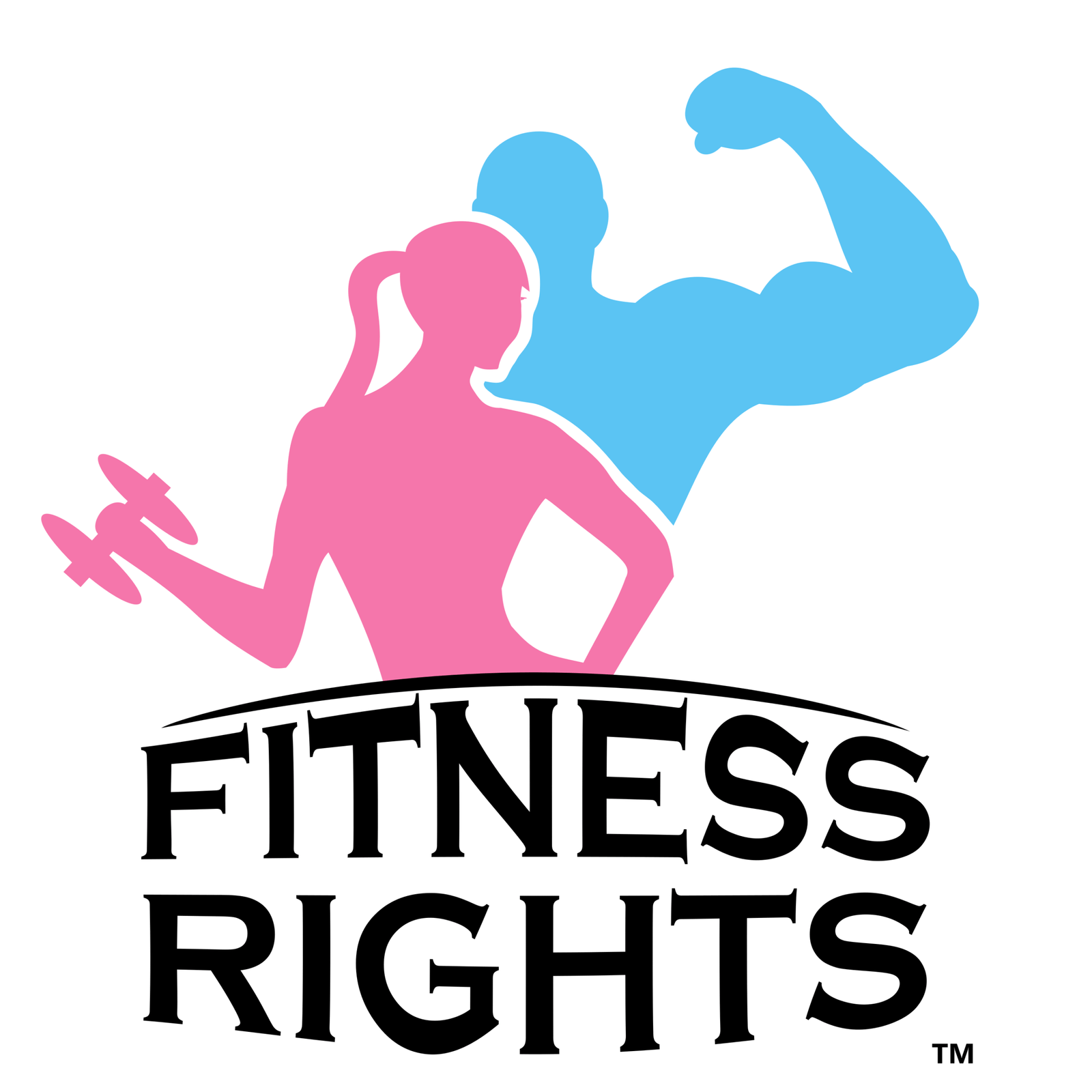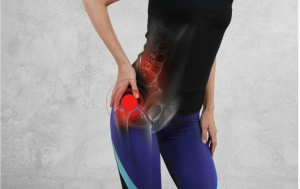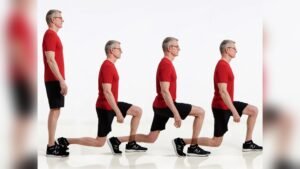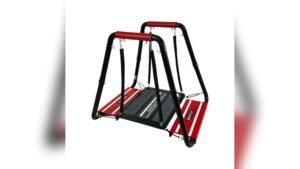Are you seeking effective exercise equipment to strengthen your hips while minimizing discomfort? Whether you’re dealing with hip pain or arthritis or simply want to improve your hip strength, choosing the right workout machines is crucial. This comprehensive guide will explore the best exercise equipment for bad hips, highlighting their pros and cons. From low-impact options to machines that target both hips and thighs, we’ve got you covered.
Table of Contents
ToggleProfessional’s recommended exercise equipment for bad hips
Doctors or, healthcare professionals suggest Gym machines for hip strengthening. These range from elliptical trainers, recumbent bikes, resistance bands, exercise balls, pool exercises, etc. to
Elliptical trainer
The elliptical trainer, also known as an elliptical machine or cross-trainer, is a popular gym equipment option for people with bad hips. It offers a low-impact workout that can be gentler on the joints than running or jumping. Here are some advantages & limitations of using an elliptical trainer specifically for individuals with bad hips:
Advantages:
- Low-impact exercise: The elliptical trainer provides a smooth and fluid motion that reduces hip and joint stress. It is an excellent option for individuals with bad hips who want cardiovascular exercise without excessive impact.
- Total body workout: Elliptical trainers engage the upper and lower body, providing a full-body workout. This can be beneficial for overall fitness and calorie burning.
- Customizable intensity: Most elliptical trainers have adjustable resistance levels, allowing users to tailor the intensity of their workout to their fitness level and comfort. This feature is particularly useful for those with bad hips, who can gradually increase the intensity as their hip strength improves.
- Improved cardiovascular health: Regular use of an elliptical trainer can help improve cardiovascular endurance, strengthen the heart, and promote overall cardiovascular health.
Limitations/Warnings:
- Limited weight-bearing benefits: While elliptical training is a low-impact exercise, it does not provide the same weight-bearing benefits as walking or running. Weight-bearing exercises are important for maintaining bone density, so it may be beneficial to supplement elliptical workouts with other weight-bearing activities.
- Potential for overuse injuries: Like any exercise equipment, improper form or excessive use can lead to overuse injuries. It’s important to start with shorter sessions and gradually increase duration and intensity to avoid strain on the hips or other joints.
- Not suitable for severe hip conditions: Individuals with severe hip conditions, such as advanced osteoarthritis or severe hip pain, should consult a healthcare professional before using an elliptical trainer. In some cases, alternative exercises or treatments may be more appropriate.
Recumbent Bike
The recumbent bike is a popular gym equipment option for individuals with bad hips, offering a comfortable, low-impact workout. Here are some pros and cons of using a recumbent bike specifically for individuals with bad hips:
Advantages
- Low-impact exercise: The recumbent bike provides a low-impact workout that is gentler on the hips and joints than running or jumping. This makes it an excellent option for individuals with bad hips who want cardiovascular exercise without excessive impact.
- Comfortable seating: The recumbent bike features a reclined and supportive position with a backrest and a larger seat. This design helps reduce stress on the hips and lower back, making it more comfortable for individuals with hip issues.
- Reduced strain on the hip joints: The recumbent bike’s design allows the legs to extend forward while pedaling, which can help minimize strain on the hip joints. This is particularly beneficial for individuals with limited hip mobility or hip pain.
- Improved cardiovascular health: Regular use of a recumbent bike can help improve cardiovascular endurance, strengthen the heart, and promote overall cardiovascular health. It allows individuals with bad hips to engage in effective cardio exercise without aggravating their hip condition.
- Versatility in intensity levels: Recumbent bikes typically have adjustable resistance levels, allowing users to customize the intensity of their workout to their fitness level and comfort. This feature is particularly useful for those with bad hips, who can gradually increase the intensity as their hip strength improves.
Limitations/Warnings
- Limited weight-bearing benefits: Weight-bearing exercises are important for maintaining bone density, so it may be beneficial to supplement recumbent bike workouts with other weight-bearing activities.
- Limited engagement of upper body muscles: Unlike some other exercise equipment, the recumbent bike primarily focuses on lower body workout, with minimal engagement of the upper body muscles. If you seek a full-body workout, you may need to incorporate additional exercises or equipment.
- Potential for overuse injuries: As with any exercise equipment, improper form or excessive use can lead to overuse injuries. It’s important to start with shorter sessions and gradually increase duration and intensity to avoid strain on the hips or other joints.
Resistance Bands
Resistance bands are versatile, portable gym equipment that can benefit individuals with bad hips. They offer a wide range of exercises that can help strengthen and rehabilitate the hips while providing a low-impact workout. Here are some pros and cons of using resistance bands specifically for individuals with bad hips:
Advantages
- Low-impact exercise: Resistance bands provide a gentle, low-impact workout on the hips and joints. They offer a controlled and customizable resistance, allowing individuals with bad hips to engage in strengthening exercises without excessive strain.
- Targeted hip exercises: Resistance bands can specifically target the hip muscles, helping to strengthen and stabilize the hips. It can be particularly beneficial for individuals with bad hips, as it can aid in improving hip mobility and reducing pain.
- Versatile and adaptable: Resistance bands come in various resistance levels, allowing users to adjust the intensity of their workouts easily. They can be used for a wide range of exercises, including hip abductions, extensions, and lateral band walks, which can help improve hip strength and stability.
- Portable and convenient: Resistance bands are lightweight and easily portable, making them convenient for home workouts or traveling. They take up minimal space and can be used anywhere, giving individuals with bad hips the flexibility to exercise without bulky equipment.
Limitations/Warnings
- Limited cardiovascular benefits: Individuals with bad hips may need to supplement resistance band exercises with low-impact cardio exercises to maintain overall cardiovascular health.
- Progression may be limited: Over time, individuals with bad hips may need to increase the resistance level of their resistance bands to continue challenging their muscles. However, the progression options with resistance bands may be somewhat limited compared to traditional weightlifting equipment. Exploring different band tensions and exercise variations is important to continue challenging the hips.
- Proper technique is crucial: To avoid injury, it’s important to use proper form and technique when using resistance bands. Incorrect positioning or excessive tension can lead to discomfort or exacerbate hip issues. It’s advisable to seek guidance from a healthcare professional or a qualified fitness trainer to ensure proper technique.
- May not address all aspects of hip health: While resistance bands can be effective for strengthening the hip muscles, they may not address all aspects of hip health, such as joint stability or flexibility. Incorporating other exercises and modalities, such as stretching and mobility work, can help maintain overall hip health.
Balance Ball
The balance ball, a stability ball, or a Swiss ball, can be beneficial gym equipment for individuals with bad hips. It offers a wide range of exercises that target the thighs and hips, helping to strengthen and stabilize these areas. Here are some pros and cons of using a balance ball specifically for individuals with bad hips, focusing on exercise machines for thighs and hips:
Advantages
- Effective for strengthening hips: The balance ball can be used for various exercises that target the hip muscles, including hip bridges, hip abductions, and ball squats. These exercises help strengthen the hip muscles, improve stability, and support overall hip health.
- Engages core muscles: When using a balance ball, the body must engage the core muscles to maintain stability and balance. It can improve core strength, which is important for supporting the hips and maintaining proper alignment during movement.
- Low-impact exercise: The balance ball provides a gentle, low-impact workout on the hips and joints. It allows individuals with bad hips to engage in thigh and hip exercises without placing excessive stress on the hip joints.
- Versatile and adaptable: The balance ball offers various exercises that can be modified to suit different fitness levels and goals. It can be used for strength training, stretching, and even gentle mobility exercises, making it a versatile tool for individuals with bad hips.
Disadvantages/Limitations
- Limited cardiovascular benefits: While the balance ball is effective for strength and stability training, it may not provide the same benefits as cycling or running. Individuals with bad hips may need to supplement balance ball exercises with low-impact cardio exercises to maintain overall cardiovascular health.
- Proper technique and balance: Using a balance ball requires good balance and proper technique to avoid strain or hip injury. It’s important to start with exercises appropriate for your current fitness level and gradually progress. Seeking guidance from a healthcare professional or a qualified fitness trainer can help ensure proper technique and reduce the risk of injury.
- May not address all aspects of hip health: While the balance ball can be effective for strengthening the hip muscles, it may not address all aspects of hip health, such as joint stability or flexibility. Incorporating other exercises and modalities, such as stretching, mobility work, or targeted physical therapy exercises, can help maintain overall hip health.
- It may not suit everyone: Individuals with severe hip conditions or acute hip pain should consult a healthcare professional before using a balance ball. They can provide personalized advice based on the specific condition and recommend suitable exercises or modifications.
Pool Exercises
Pool exercises, also known as aqua exercises or water workouts, can be highly beneficial for individuals with bad hips. The buoyancy and low-impact nature of water makes it an ideal environment for gentle yet effective hip exercises. Here are some pros and cons of pool exercises specifically for individuals with bad hips:
Advantages:
- Low-impact and gentle on the hips: Water provides buoyancy, which reduces the impact on joints, including the hips. This makes pool exercises an excellent option for individuals with bad hips as it minimize stress and strain on the hip joints.
- Increased range of motion: The buoyancy of water allows for increased freedom of movement, making it easier to perform exercises that may be challenging on land. Pool exercises can help improve the range of motion in the hips, promoting flexibility and reducing stiffness.
- Resistance without added pressure: Water provides natural resistance, which can help strengthen the hip muscles without putting excessive pressure on the joints. This resistance aids in building hip strength and stability while minimizing the risk of aggravating existing hip conditions.
- Reduced pain and inflammation: Immersing the body in water can have a soothing effect on painful hip joints. The hydrostatic pressure of the water can help reduce inflammation and alleviate discomfort, allowing individuals with bad hips to exercise with less pain.
Limitations/warning
1. Additional cost and time: Joining a pool or aquatic facility may involve additional costs and time commitments. Membership fees, travel time, and scheduling sessions can be factors to consider when incorporating pool exercises into a fitness routine.
2. Limited variety of exercises: While pool exercises offer a range of benefits, the variety of exercises may be somewhat limited compared to land-based workouts. This can be a drawback for individuals who prefer a wider range of exercise options or need specific movements to target their hip issues.
3. Challenge in maintaining proper form: Water resistance can make it challenging to maintain proper form during pool exercises. Individuals with bad hips should pay close attention to their technique and ensure they are performing exercises correctly to avoid overcompensation or strain on other joints.
Tai-Chai
Tai Chi is a traditional Chinese martial art that involves slow, flowing movements and deep breathing. It is often practiced for its health benefits, including promoting balance, flexibility, and overall well-being. Here are some pros and cons of practicing Tai Chi specifically for individuals with bad hips:
Advantages
- Low-impact exercise: Tai Chi is a low-impact exercise that is gentle on the joints, including the hips. The slow and controlled movements help improve hip strength, flexibility, and range of motion without placing excessive stress on the hip joints.
- Improves balance and stability: Tai Chi movements involve shifting weight from one leg to another while maintaining proper posture. This helps improve balance and stability, which can be particularly beneficial for individuals with bad hips who may be prone to falls or instability.
- Promotes relaxation and stress reduction: Tai Chi incorporates deep breathing and mindfulness, which can help reduce stress and promote relaxation. Lowering stress levels can indirectly benefit hip health by reducing muscle tension and promoting overall well-being.
- Enhances body awareness: Tai Chi emphasizes body awareness and proper alignment. This can help individuals with bad hips develop a better understanding of their body mechanics, allowing them to move more mindfully and reduce the risk of further hip discomfort or injury.
Limitations/Warning
- Learning curve: Tai Chi requires learning and practicing specific movements and sequences. It may take time and patience to become familiar with the techniques and remember the various forms. Consistency and regular practice are key to fully experiencing the benefits of Tai Chi.
- May not address all aspects of hip health: While Tai Chi can help improve balance, flexibility, and overall well-being, it may not directly address specific hip conditions or joint stability. It’s important to consult with a healthcare professional or a physical therapist for a comprehensive approach to hip health, which may include additional exercises or treatments.
- Potential for discomfort or pain: Although Tai Chi is generally considered a gentle exercise, individuals with bad hips may still experience discomfort or pain during certain movements. It’s important to listen to your body, modify movements as needed, and work within your comfort level to avoid exacerbating hip issues.
- Limited cardiovascular benefits: Tai Chi is not primarily focused on cardiovascular fitness. While it offers numerous health benefits, it may not provide the same level of cardiovascular exercise as more vigorous activities like running or cycling. Incorporating other forms of exercise alongside Tai Chi can help maintain overall cardiovascular health.
Expert recommendation
According to the American Family Physician, hip pain may affect all ages including seniors. Most patient comes to the doctor with three kinds of localized anatomic regions-the anterior hip & groin, the posterior hip & buttock, or the lateral hip. While the anterior hip & groin pain is related to osteoarthritis, posterior hip pain is related to sacroiliac joint dysfunction and lateral hip pain occurs with greater trochanteric pain syndrome.
The differential diagnosis of hip pain is broad. Magnetic resonance imaging is practiced globally.
FAQs
Q1: Can cycling aggravate hip pain?
A: Cycling on a recumbent bike or using proper biking techniques can be a low-impact exercise that doesn’t exacerbate hip pain. However, individuals with severe hip conditions should consult a healthcare professional before starting any new exercise routine.
Q2: What are the best exercises for strengthening hips?
A: Besides using exercise equipment, exercises such as hip bridges, clamshells, and leg lifts can help strengthen the hips. Targeting the hip abductors, adductors, and gluteal muscles is essential for optimal results.
Q3: Can exercise equipment alone relieve hip pain?
A: Exercise equipment can help strengthen the hips and alleviate pain, but addressing the underlying causes of hip pain is essential. Proper diagnosis, treatment, and incorporating exercises recommended by healthcare professionals are crucial for long-term relief.







